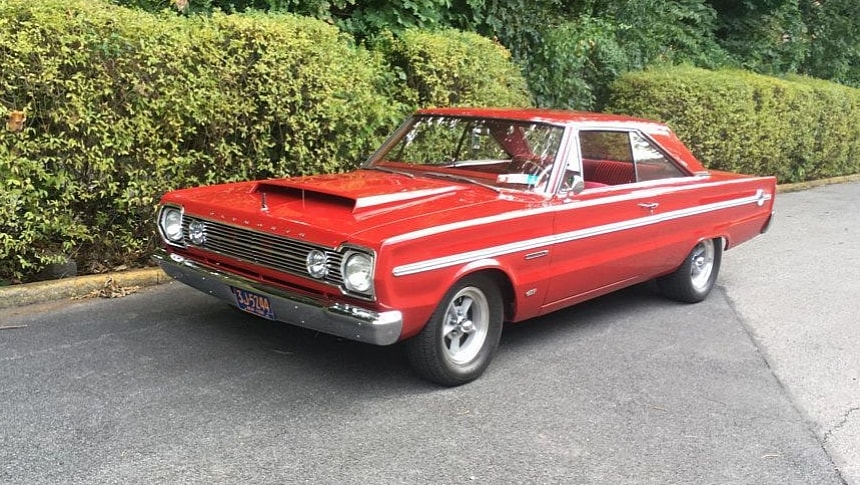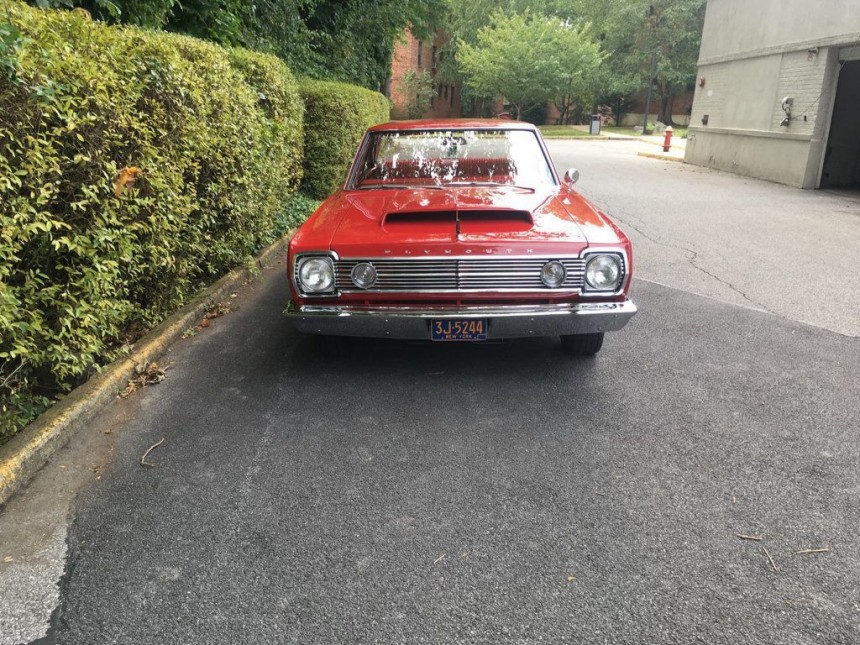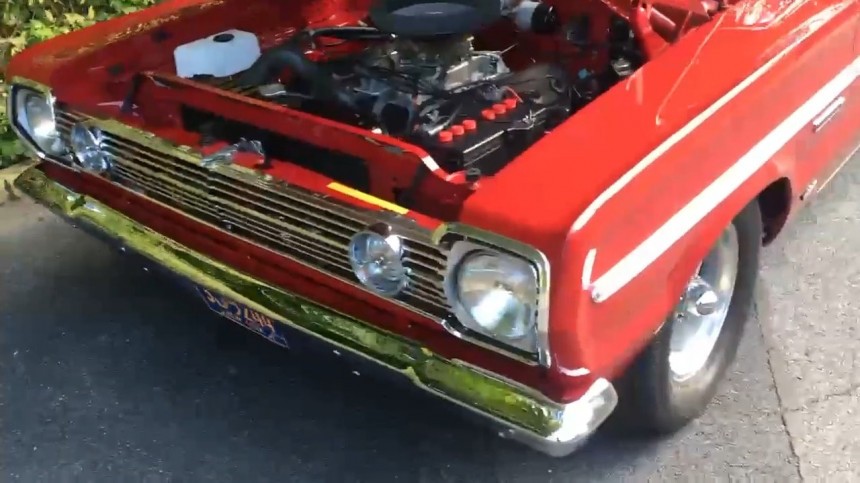The Street Hemi saw its first application in 1966, with 2,714 big-blocks distributed unevenly (some would say unfairly) between the Plymouth and Dodge divisions of Chrysler Motors Corporation. The year is important for Mopar fans because another one of the legends of the muscle car era was born then: the Dodge Charger.
However, the Coronet got the lion’s share of the Dodge cut of the 426-cube serving, with 700 cars getting the elephant eight-cylinder, eight-barrel heavy puncher. The Charger got only 468, but at least Dodge had two Hemi models to brag with. The Plymouth sister division relied solely on the Belvedere to tear up the street and track with 425 hp and 490 lb-ft (431 PS, 664 Nm) coming out of the seven-liter abomination.
Granted, the Belvedere nameplate had several trim levels, like the basic Belvedere I, the middle-of-the-road Belvedere II (the naming committee must have been at the top of their creativity game when they christened these two), and the Satellite. Out of 1,546 Hemi engines allotted to the Plymouth division, more than half (844) ended up between the front fenders of the high-ranking Satellite. The Belvedere II settled for 543 of the rowdy new V8s, leaving the lowly Belvedere I with just 168 Hemi engines.
The Belvedere was Plymouth’s intermediate offer for the year. Adding a Hemi engine to the lineup made it a tremendous competitor at the never-ending, all-important stoplight Grand Prix. However, that immense power demanded equal responsibility and not every Hemi buyer was constituted.
One Belvedere II hardtop owner somehow convinced a drop-forged con rod to find a new reciprocating route through the side of its 426 big-inch Hemi block. That was somewhere between 1966 and 1981, and it was probably closer to the initial year because the wrecked motor forced the car into a most dishonorable retirement. You know the situation – mice and other plagues slowly degrade a vehicle until it reaches ‘Crusher Candidate’ status.
That’s precisely what happened with the Belvedere II – in 1981, a blue-collared gearhead learned that the rundown Plymouth was going for cheap. For all readers wondering what a cheap grenade Hemi was some 40-odd years ago, it’s $400. Yes, there was a time when Hemi cars were just old rust buckets with little to no value to anyone.
The car nut (Joe Vischansky) bought the rolling chassis for its four-speed transmission, driveshaft, Dana 60 rear end, and some other parts that were in the trunk. The interior was the aftermath of a rodent prom party gone sideways, and the man had every honest intention of saving the drivetrain and scrapping the body.
Luckily, he didn’t and pushed the Belvedere carcass into a barn, where it sat for a few short years. By the mid-80s, hemi cars were gaining momentum, and Joe took one good look at his Plymouth and decided to restore it. Little by little, he began buying parts –a multi-year process, given that his middle-class wage wasn’t quite the end-of-the-rainbow treasure trove. He even bought a rotisserie from a friend and rebuilt it to fit the Belvedere.
On dry, sunny days, the owner pushed the Plymouth out of the garage and sandblasted the underside—that should give us an idea of how deeply involved he was in the restoration. However, one piece was missing from the puzzle—the big one—the engine. Joe sniffed around and found one—in a chicken coop, of all places—and bought it.
From there on, it all went like clockwork. He had the replacement Hemi over-bored .030 inches (0.76 mm) and shaved .015 inches (0.38 mm) off the heads and the block. This resulted in a compression ratio of 10.5:1, still manageable with a stock forged crankshaft and forged connecting rods. Arias pistons with TRW rings and a solid, flat-tappet, high-lift camshaft (304 degrees of duration) came next, and the twin Carter AFB carburetors have been re-jetted.
The original four-speed transmission was rebuilt with a 4.30:1 Sure Grip gearing instead of the original 3.54. The car came from the factory without power steering or brakes, and Joe left it like that but modified the hood with a functional air scoop. Meshing through the gears is handled by a Hurst lever—something probably the original buyer installed after he got the car.
Despite being abandoned in the 1970s, this Belvedere II Hemi wasn’t left to the mercy of oblivion, and all its 52,000 miles (83,685 km) are documented. The car won Best of Show at Carlisle in 2008 and is now for sale, with a $30,000 high bid sitting below the seller’s asking price. Sure, it’s not a factory original, but the engine—albeit rebuilt—is a period-correct 426 Hemi V8.
This 1966 Plymouth Belvedere II would be one of the 531 examples assembled with this powerplant and one of 280 fitted with a heavy-duty four-speed manual transmission. Listen to the grunting V8's high idle in the video below, and then tell what a fair price for this Mopar would be.
Granted, the Belvedere nameplate had several trim levels, like the basic Belvedere I, the middle-of-the-road Belvedere II (the naming committee must have been at the top of their creativity game when they christened these two), and the Satellite. Out of 1,546 Hemi engines allotted to the Plymouth division, more than half (844) ended up between the front fenders of the high-ranking Satellite. The Belvedere II settled for 543 of the rowdy new V8s, leaving the lowly Belvedere I with just 168 Hemi engines.
The Belvedere was Plymouth’s intermediate offer for the year. Adding a Hemi engine to the lineup made it a tremendous competitor at the never-ending, all-important stoplight Grand Prix. However, that immense power demanded equal responsibility and not every Hemi buyer was constituted.
That’s precisely what happened with the Belvedere II – in 1981, a blue-collared gearhead learned that the rundown Plymouth was going for cheap. For all readers wondering what a cheap grenade Hemi was some 40-odd years ago, it’s $400. Yes, there was a time when Hemi cars were just old rust buckets with little to no value to anyone.
The car nut (Joe Vischansky) bought the rolling chassis for its four-speed transmission, driveshaft, Dana 60 rear end, and some other parts that were in the trunk. The interior was the aftermath of a rodent prom party gone sideways, and the man had every honest intention of saving the drivetrain and scrapping the body.
On dry, sunny days, the owner pushed the Plymouth out of the garage and sandblasted the underside—that should give us an idea of how deeply involved he was in the restoration. However, one piece was missing from the puzzle—the big one—the engine. Joe sniffed around and found one—in a chicken coop, of all places—and bought it.
From there on, it all went like clockwork. He had the replacement Hemi over-bored .030 inches (0.76 mm) and shaved .015 inches (0.38 mm) off the heads and the block. This resulted in a compression ratio of 10.5:1, still manageable with a stock forged crankshaft and forged connecting rods. Arias pistons with TRW rings and a solid, flat-tappet, high-lift camshaft (304 degrees of duration) came next, and the twin Carter AFB carburetors have been re-jetted.
Despite being abandoned in the 1970s, this Belvedere II Hemi wasn’t left to the mercy of oblivion, and all its 52,000 miles (83,685 km) are documented. The car won Best of Show at Carlisle in 2008 and is now for sale, with a $30,000 high bid sitting below the seller’s asking price. Sure, it’s not a factory original, but the engine—albeit rebuilt—is a period-correct 426 Hemi V8.
This 1966 Plymouth Belvedere II would be one of the 531 examples assembled with this powerplant and one of 280 fitted with a heavy-duty four-speed manual transmission. Listen to the grunting V8's high idle in the video below, and then tell what a fair price for this Mopar would be.













